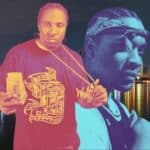Hip-hop has become a global phenomenon, and Peru is no exception. The genre has been embraced by Peruvian youth as a form of self-expression and cultural identity. While hip-hop in Peru may not have the same level of commercial success as in other countries, it has a loyal following and a rich history.
Hip-hop in Peru has its roots in the 1980s, when the culture first arrived in the country through movies like Beat Street. The genre quickly gained popularity, particularly in Lima, where it became a way for young people to express their frustration with social and political issues. Today, hip-hop in Peru has evolved to include a variety of styles, from traditional rap to fusion with other genres like jazz and spoken word.
One notable aspect of hip-hop in Peru is its connection to indigenous culture. Artists like Renata Flores have gained international attention for their use of the Quechua language in their music, which aims to preserve and promote indigenous culture. Overall, hip-hop in Peru is a vibrant and diverse scene that continues to grow and evolve.
Origins of Hip-Hop in Peru
Hip-hop music and culture have a long history in Peru, dating back to the late 1980s and early 1990s. The emergence of hip-hop in Peru was influenced by the global spread of the genre, as well as by local social and political conditions.
In Lima, the capital city of Peru, hip-hop music and culture first gained popularity in the late 1980s and early 1990s, with the formation of the group Golpeando la Calle. This group was comprised of members from various different groups who, for a decade, were leaders of the country’s hip-hop movement.
The early years of hip-hop in Peru were marked by a strong emphasis on social and political issues. Many of the early Peruvian rap groups used their music as a tool for social and political commentary, addressing issues such as poverty, inequality, and corruption.
In the years that followed, hip-hop continued to grow in popularity among Peruvian youth, with the formation of new rap groups and the establishment of hip-hop foundations and organizations. Today, hip-hop remains an important part of youth culture in Peru, with many young people using the genre as a means of self-expression and social commentary.
Overall, the origins of hip-hop in Peru were shaped by a combination of global and local influences, as well as by the social and political conditions of the time. Today, hip-hop continues to be an important part of Peru’s music and cultural landscape, with a vibrant and diverse community of artists and fans.
Influence of Political Climate
Peru has a long history of political instability, which has had a significant impact on the country’s cultural and artistic expressions, including hip-hop. The country has experienced a series of political upheavals, including a brutal internal armed conflict that lasted from 1980 to 2000, and which claimed the lives of more than 69,000 people. The conflict was fueled by social, economic, and political inequalities, as well as by the rise of the Maoist guerrilla group, Shining Path.
The political climate in Peru during the internal armed conflict was marked by fear, repression, and censorship. The government imposed strict controls on the media and the arts, including music. Hip-hop artists were often targeted by the authorities, who saw the genre as a potential threat to their power. Many hip-hop artists were harassed, arrested, or even killed for their political activism.
Despite the challenges, hip-hop continued to thrive in Peru, providing a voice for the marginalized and the oppressed. The genre became a powerful tool for social and political commentary, addressing issues such as poverty, inequality, and corruption. Hip-hop artists in Peru often drew inspiration from the country’s rich cultural heritage, blending traditional rhythms and instruments with modern beats and rhymes.
Today, hip-hop remains an important cultural force in Peru, reflecting the country’s complex social and political realities. The genre continues to evolve, incorporating new sounds and styles, while staying true to its roots as a voice for the people. As Peru continues to grapple with its past and present challenges, hip-hop remains an important means of expression and resistance for many of its citizens.
Prominent Artists and Groups
Peruvian hip-hop has been gaining popularity in recent years, with many talented artists and groups emerging on the scene. Here are some of the most prominent ones:
Renata Flores
Renata Flores is a Quechuan hip-hop artist who has gained international recognition for her unique blend of traditional Andean music with modern rap beats. Her music is a powerful tribute to her indigenous roots, and she has become a role model for many young people in Peru and beyond.
ISQUN
ISQUN is a Peruvian rap duo that has been making waves in the urban music scene. Their music is a mix of hard-hitting beats and socially conscious lyrics that address issues such as poverty, inequality, and political corruption. Their latest album, “El Origen,” has received critical acclaim and has cemented their status as one of the most promising acts in Peruvian hip-hop.
The Animals
The Animals are a legendary Peruvian hip-hop group that has been active since the early 2000s. Their music is a fusion of reggae, rock, and rap, and their socially conscious lyrics have made them a favorite among fans of conscious hip-hop. They have released several albums over the years, and their latest, “El Camino,” is a testament to their enduring popularity.
Other Prominent Artists
In addition to the above-mentioned acts, there are many other talented hip-hop artists in Peru who are worth checking out. Some of the most notable ones include:
- Malucci: One of the top female rappers and trap artists in Latin America.
- Faraón Love Shady: Known for his unorthodox style and unique appearance.
- Kayfex: A rising star in the Latin trap scene who recently signed with Warner Music in the US.
- Pedro Suarez Vertiz: A legendary figure in the Latin rock scene who has been active since the 1980s.
Overall, Peruvian hip-hop is a vibrant and exciting genre that is constantly evolving. With so many talented artists and groups emerging on the scene, it is sure to continue to thrive in the years to come.
Impact of American and Global Hip-Hop
Hip-hop is a global phenomenon that originated in the United States in the 1970s. Since then, it has spread across the world and has become a significant cultural force in many countries, including Peru. The impact of American and global hip-hop on the Peruvian music scene has been significant and has led to the emergence of new artists and styles.
One of the most significant impacts of American hip-hop on the Peruvian music scene has been through the influence of Michael Jackson. Jackson’s music and dance moves have inspired many Peruvian artists to incorporate elements of hip-hop into their music. Additionally, American Idol and other talent shows have helped to popularize hip-hop in Peru by showcasing talented hip-hop performers.
The rise of YouTube and social media has also played a significant role in the global spread of hip-hop. Many Peruvian hip-hop artists have used these platforms to promote their music and connect with fans worldwide. This has helped to create a more diverse and global hip-hop scene in Peru, with artists drawing inspiration from a wide range of sources.
Globalization has also played a role in the spread of hip-hop in Peru. As the world becomes more connected, hip-hop has become a universal language that transcends borders and cultures. Peruvian hip-hop artists have been able to collaborate with artists from around the world, creating new and exciting sounds that blend different styles and cultures.
Overall, the impact of American and global hip-hop on the Peruvian music scene has been significant. It has helped to create a vibrant and diverse hip-hop culture in Peru, with artists drawing inspiration from a wide range of sources. As hip-hop continues to evolve and spread across the world, it is likely that its influence on the Peruvian music scene will only continue to grow.
Hip-Hop in Indigenous Languages
Hip-hop has become a platform for indigenous languages to be heard and celebrated in Peru. In particular, Quechua, an indigenous language spoken in the Andean region, has been incorporated into the lyrics and beats of many hip-hop artists.
Renata Flores, a young Peruvian musician, has gained international recognition for her Quechua-language rap music. She is part of a generation of Peruvian artists who are combining the sounds of Latin trap, rap, and reggaeton with the language and culture of the Andean countryside. Flores has stated that her music is an act of resistance and an attempt to rescue indigenous culture from being forgotten.
Another prominent figure in the Quechua-language hip-hop scene is Liberato Kani. He is a singer and songwriter who uses his music to promote indigenous languages and cultures. Kani was born in Lima, Peru, and grew up in the San Juan de Lurigancho district. Through his work, he has become a cultural and indigenous languages activist.
The incorporation of indigenous languages into hip-hop music has not only helped to preserve these languages but has also brought attention to the struggles that indigenous communities face. Américo Mendoza-Mori, a professor of Quechua at the University of Pennsylvania, has stated that hip-hop has become a way for indigenous people to express their identity and their experiences of marginalization and discrimination.
Overall, hip-hop has become a powerful tool for indigenous people to reclaim their culture and their voices. By incorporating indigenous languages into their music, artists like Renata Flores and Liberato Kani are helping to promote linguistic and cultural diversity in Peru.
Hip-Hop and Other Music Genres
Hip-hop music in Peru has been influenced by a variety of other music genres. The country’s diverse musical landscape includes pop, rock, trap, blues, Latin, alternative, folk, jazz, reggae, and Andean music. These genres have all played a role in shaping the sound of hip-hop in Peru.
One of the most significant influences on hip-hop in Peru has been Andean music. Andean music is characterized by the use of traditional instruments such as the quena, zampoña, and charango. These instruments have been incorporated into hip-hop tracks, giving them a unique sound that sets them apart from hip-hop in other parts of the world.
Another genre that has had an impact on hip-hop in Peru is reggae. Reggae music became popular in Peru in the 1980s and has since influenced many hip-hop artists. The laid-back rhythms and socially conscious lyrics of reggae have been incorporated into hip-hop tracks, creating a fusion of the two genres.
Rock music has also played a role in shaping the sound of hip-hop in Peru. Many hip-hop artists in Peru have been influenced by rock music, and this influence can be heard in their music. Some hip-hop tracks feature distorted guitar riffs, heavy drums, and other elements commonly found in rock music.
In recent years, trap music has become increasingly popular in Peru. This genre originated in the southern United States and is characterized by its heavy use of 808 drums, fast hi-hats, and dark, brooding melodies. Some hip-hop artists in Peru have incorporated elements of trap music into their tracks, giving them a more contemporary sound.
Overall, the diverse musical landscape of Peru has played a significant role in shaping the sound of hip-hop in the country. From Andean music to reggae to rock and trap, these genres have all had an impact on the development of hip-hop in Peru.
Hip-Hop Culture in Peru
Hip-hop culture has been thriving in Peru since the late 1980s. It started with the emergence of the first Peruvian rap band, Golpeando la Calle, which was formed by members from various different groups. For a decade, they were leaders of the country’s hip-hop movement.
Today, hip-hop culture has spread throughout Peru, with a vibrant scene that includes concerts, festivals, and street performances. One of the most notable festivals is the Hip Hop al Parque festival, which takes place in Lima every year. It brings together some of the best hip-hop artists from Peru and other Latin American countries.
In addition to Lima, the city of Cusco has also become a hub for hip-hop culture in Peru. The city’s vibrant street art scene has provided a platform for many local hip-hop artists to showcase their talents. Street performances are a common sight in Cusco, with artists using the city’s historic architecture as a backdrop for their performances.
Peruvian hip-hop artists are known for their socially conscious lyrics, which often address issues such as poverty, inequality, and political corruption. Some of the most popular hip-hop artists in Peru include Renata Flores, who raps in the indigenous language of Quechua, and Chystemc, who is known for his unique fusion of hip-hop and Andean folk music.
Overall, hip-hop culture in Peru continues to grow and evolve, with new artists and events emerging each year. Whether it’s through concerts, festivals, or street performances, hip-hop has become an important part of Peru’s cultural landscape.
Future of Hip-Hop in Peru
Hip-hop in Peru has come a long way since its inception in the 1990s. The genre has grown in popularity and has become an integral part of the country’s music scene. As hip-hop continues to evolve, the future of the genre in Peru looks promising.
One of the most significant indicators of the future of hip-hop in Peru is the increasing number of live performances and events. Hip-hop artists in Peru are regularly performing at major music festivals and venues across the country. These events provide a platform for artists to showcase their talent and connect with fans.
In addition to live performances, hip-hop artists in Peru are also releasing new music at a steady pace. The availability of digital platforms has made it easier for artists to distribute their music and reach a wider audience. The rise of streaming services has also made it easier for fans to discover new artists and stay up to date with their favorite performers.
The future of hip-hop in Peru also looks bright in terms of international recognition. Peruvian hip-hop artists are gaining recognition on the global stage, with many receiving critical acclaim and performing at international festivals. This recognition is helping to bring attention to the genre and its unique blend of traditional Peruvian sounds and modern hip-hop beats.
Looking ahead, the future of hip-hop in Peru is likely to be shaped by a new generation of artists who are pushing the boundaries of the genre. These artists are experimenting with new sounds and styles, and are bringing fresh perspectives to the music scene.
In conclusion, the future of hip-hop in Peru looks bright, with live performances, new music releases, and international recognition all contributing to the growth and evolution of the genre. As the genre continues to evolve, we can expect to see new and exciting developments that will shape the future of hip-hop in Peru for years to come.
Hip-Hop’s Influence on Peruvian Society
Hip-hop has had a significant impact on Peruvian society, particularly among the younger generation. The genre’s popularity has grown rapidly in Peru, with many artists incorporating their own cultural and musical influences into their music.
Hip-hop has provided a platform for Peruvian artists to express themselves and address social issues such as poverty, inequality, and political corruption. Many hip-hop artists in Peru use their music to raise awareness and advocate for change, making it an important tool for social and political activism.
Peruvian hip-hop has also played a role in promoting cultural identity and pride. Many artists incorporate traditional Peruvian instruments and rhythms into their music, creating a unique blend of hip-hop and traditional Peruvian music. This fusion has helped to preserve and promote Peruvian culture, particularly among younger generations who may not have otherwise been exposed to it.
In addition to its cultural impact, hip-hop has also played a role in promoting mobility and opportunities for young people in Peru. Many hip-hop artists have been able to achieve success and international recognition, which has opened up new doors and opportunities for them and others in the industry.
Overall, hip-hop has become an important part of Peruvian society and culture, providing a platform for expression, activism, and cultural preservation. Its influence can be seen in various aspects of Peruvian life, from music and art to politics and social issues.
Frequently Asked Questions
Who are some notable Peruvian hip-hop artists?
Some notable Peruvian hip-hop artists include Rapper School, Crew Peligrosos, and La Inédita. These artists have gained popularity both in Peru and internationally.
What is the current state of hip-hop in Peru?
Hip-hop in Peru is still a growing genre, but it has gained a significant following over the years. There are many talented artists and producers who are working hard to push the genre forward in the country.
How has hip-hop culture influenced Peruvian music?
Hip-hop culture has had a significant influence on Peruvian music, especially in the areas of rap and electronic music. Many artists have incorporated hip-hop elements into their music, such as rapping and beatboxing.
What is the history of hip-hop in Peru?
Hip-hop in Peru has been around since the 1980s, but it didn’t gain mainstream popularity until the 1990s. The genre has been heavily influenced by American hip-hop, but it has also developed its unique style and sound.
What distinguishes Peruvian hip-hop from hip-hop in other countries?
Peruvian hip-hop has a unique sound that incorporates elements of traditional Peruvian music and culture. The lyrics often focus on social and political issues that are relevant to Peru.
What are some popular hip-hop venues in Peru?
Some popular hip-hop venues in Peru include Vocé Sur, El Averno, and Sargento Pimienta. These venues host regular hip-hop events and concerts featuring both local and international artists.



